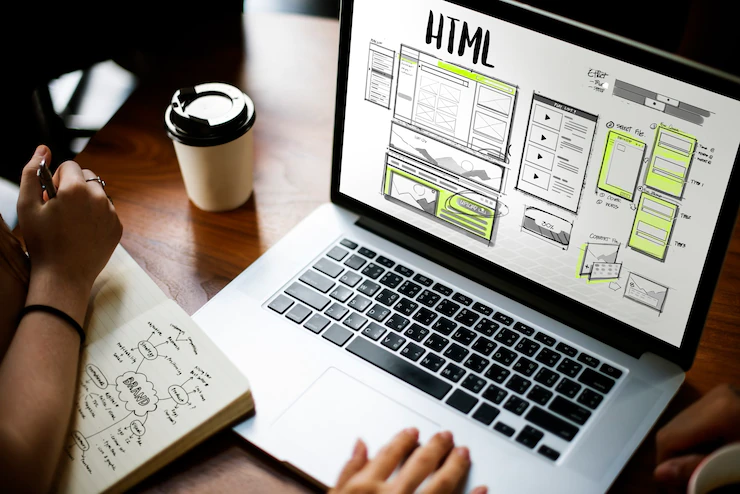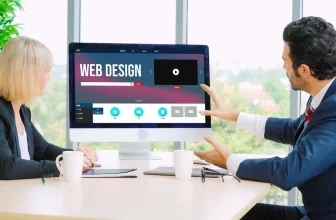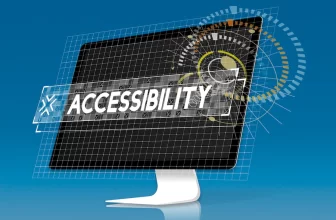
How functional is your website? You might have a great-looking site that does a great job of presenting your brand – but is it working as well as it should be?
To be truly functional, your website needs to be easy to use, not just beautiful in its design.
It should have the features that visitors want and need, as well as the features that help you capture leads and make sales. You don’t want broken or confusing elements that turn visitors off.
Here Are 6 Easy Ways To Make Your Website More Functional:
1. Use Short, Clear Labels for Your Navigation Menu

Your navigation menu isn’t a good place to be innovative! You want it to be clear and easy to use at a glance. That means:
- Use clear, obvious descriptions for each page. “Services” is much better than “The Magic I Can Work,” for instance.
- Keep your navigation menu labels short. “Get in Touch” is clear – but “Contact” is shorter.
- Using words rather than images. Never use symbols for your navigation menu – it’s confusing. Visitors shouldn’t have to guess what they’re going to get when they click a link.
2. Include a (Working!) Contact Form

Your contact page should include the information visitors need to get in touch with you – at least an email address, and ideally also a phone number. Add your physical address if you have physical premises that customers might want to visit.
It’s also a good idea to have a contact form. This lets people instantly get in touch without needing to open up their email app. If you do have a contact form, make sure it’s actually working.
(You’d be surprised how many contact forms either don’t work at all or send an email that never reaches the recipient’s inbox.)
Make a point of testing your contact form regularly, from different devices, to make sure it’s easy to use and that messages get through.
Designing a functional contact form doesn’t have to be difficult. The ShareThis website tools include a powerful (but easy-to-use) form builder that you can use to create contact forms and much more.
3. Make Sure Your Website Loads Fast

How quickly does your website load? Website speed is becoming increasingly important, with Google taking it into consideration when deciding where to rank your website.
Visitors won’t stick around for long, waiting for your website to finish loading up. Google’s own research found that “The probability of bounce increases 32% as page load time goes from 1 second to 3 seconds.”
For both your SEO (search engine optimization) and for more conversions, you want your website to load as quickly as possible. You can check your website speed for free on IsItWP’s website, which will also provide specific tips on how you can improve your site’s loading speed.
Related Guide: 6 Top Tips to Increase The Organic Traffic of My Website
4. Check How Mobile-Friendly Your Site Is

Does your website work well on mobile devices? While most sites these days are designed to be responsive, it’s easy to end up with elements that look great on desktops but don’t display well – or worse, don’t work at all – on mobile devices.
You can check how mobile-friendly any page on your site is by using Google Search Console’s Mobile-Friendly Test. This will let you know if there are any issues with the page.
5. Use Clear Hyperlinks

The web was built on hyperlinks, and it’s important to make sure that your links are clear and easy for visitors to understand and click on.
This means, at its most basic, having links that are clearly distinguishable from regular text. Ideally, you want your links to be blue, as this is the most common color for links. (Avoid using blue text in other contexts if possible, as this can be confusing.)
When you create hyperlinks, make sure they’re easy to click on. Compare these two examples of anchor text for a link:
- Learn more about our newest product.
- Learn more about our newest product
The second example, where the whole sentence is used as the anchor text, is easier to click on – especially on a mobile device.
6. Include a Search Bar

If you have a website with lots of content, such as articles, how-tos, or software documentation, make it easy for visitors to find what they’re looking for by including a search bar on your website.
The most common location for this is on the right-hand side, usually near the top of the page.
Although users can search your site through Google itself using Google’s site: command, many won’t know this is possible.
Whatever type of website you have, you want it to be as easy as possible for visitors to use. That way, visitors will be much more likely to stick around on your website, sign up for your newsletter, buy your products, get in touch to hire you, and so on.
Making a few small tweaks can make a big difference to how functional your website is – dramatically improving the results you get from it.
Read Also:






